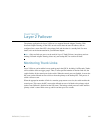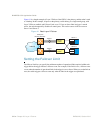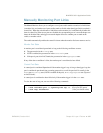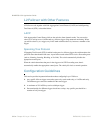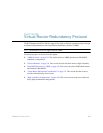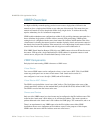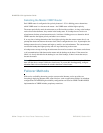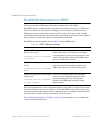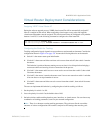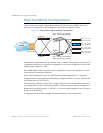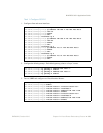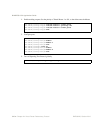
BLADEOS 6.5.2 Application Guide
BMD00220, October 2010 Chapter 24: Virtual Router Redundancy Protocol 333
Master and Backup Virtual Router
Within each virtual router, one VRRP router is selected to be the virtual router master. See
“Selecting the Master VRRP Router” on page 334 for an explanation of the selection process.
Note – If the IPv4 address owner is available, it will always become the virtual router master.
The virtual router master forwards packets sent to the virtual router. It also responds to Address
Resolution Protocol (ARP) requests sent to the virtual router's IPv4 address. Finally, the virtual
router master sends out periodic advertisements to let other VRRP routers know it is alive and its
priority.
Within a virtual router, the VRRP routers not selected to be the master are known as virtual router
backups. Should the virtual router master fail, one of the virtual router backups becomes the master
and assumes its responsibilities.
Virtual Interface Router
At Layer 3, a Virtual Interface Router (VIR) allows two VRRP routers to share an IP interface
across the routers. VIRs provide a single Destination IPv4 (DIP) address for upstream routers to
reach various destination networks, and provide a virtual default Gateway.
Note – Every VIR must be assigned to an IP interface, and every IP interface must be assigned to
a VLAN. If no port in a VLAN has link up, the IP interface of that VLAN is down, and if the IP
interface of a VIR is down, that VIR goes into INIT state.
VRRP Operation
Only the virtual router master responds to ARP requests. Therefore, the upstream routers only
forward packets destined to the master. The master also responds to ICMP ping requests. The
backup does not forward any traffic, nor does it respond to ARP requests.
If the master is not available, the backup becomes the master and takes over responsibility for
packet forwarding and responding to ARP requests.



